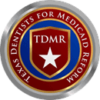
The movement to set a dental loss ratio (DLR) for the dental insurance industry is fast becoming a national issue and is now on the agenda of a number of state dental associations as well as the ADA thanks to the groundbreaking efforts of Massachusetts orthodontist Dr. Mouhab Rizkallah.
Ground-breaking initiative for DLR
Dr. Rizkallah championed Massachusetts Question 2, the “Patient Access to Affordable Dental Care Act,” a question that appeared on the Massachusetts general election ballot in November 2022 and was overwhelmingly approved by 71.6% of state voters. Using his own resources, Dr. Rizkallah gathered the necessary signatures to add the question to the ballot and rallied support from numerous organizations including the state dental association and the ADA to push it through. For his efforts, Dr. Rizkallah was named Dentistry Today’s “Person of the Year” for 2022, as well as the most influential person in dentistry by Incisal Edge.
This Massachusetts law now requires dental insurance companies to spend at least 83% of premiums on members’ dental expenses and quality improvements instead of administrative expenses. If the standard of 83% isn’t met, the companies have to issue rebates to enrollees.
DLR explained
The push for a dental loss ratio comes from the medical loss ratio (MLR) in healthcare insurance which is set under the Affordable Care Act. It indicates the share of premiums spent on medical care, plus quality improvement, versus administrative expenses and profits. Under the ACA, the MLR is set at a minimum of 80% for individual and small group markets and 85% for large group markets. This means health insurers are required to spend at least 80% or 85% of premium revenues on clinical services and healthcare quality improvement, with the remaining funds allocated for administrative costs.
This measure ensures an insurance plan’s efficiency and openness as minimum MLR standards promote accountability and value for policyholders.
A dental loss ratio (DLR) for dental insurers mirrors this concept, focusing on the fraction of premiums dedicated to dental services and treatments for insured individuals, highlighting the plan’s commitment to direct dental care.
It is something the dental insurance industry doesn’t appear to like.
DLR in Texas
In Texas, under the HHSC Uniform Managed Care Manual, DMOs must complete an annual medical loss ratio report (the instructions of which are shown below in PDF format).
However, the document does not specify an exact acceptable MLR percentage for DMOs. Instead, it outlines how each DMO must submit an MLR report annually in compliance with certain federal regulations and Texas’ specific requirements. The report calculates the MLR based on the ratio of incurred claims (including quality improvement expenditures and fraud prevention activities) to premium payments received, adjusted for taxes and regulatory fees. While target MLR levels may exist to guide DMOs, the document emphasizes that there’s no direct monetary consequence (like rebates or recoupments) tied to the MLR levels achieved for a given state fiscal year by a DMO.
As far as we know, the TDA has not made a public statement regarding a DLR for Texas dental insurance companies.
——


This is detrimental to the patient and dentist. Delta Dental spent 177 million on patient care and donated 291 million to the Catalyst Institute in 2019. The new compromised legislation from the ADA and NADP creates a loophole for insurance companies to exclude non-profit donations into the 80-85% dental loss ratio – where they spend a majority of their money already. They will continue to take money from providers and patients.